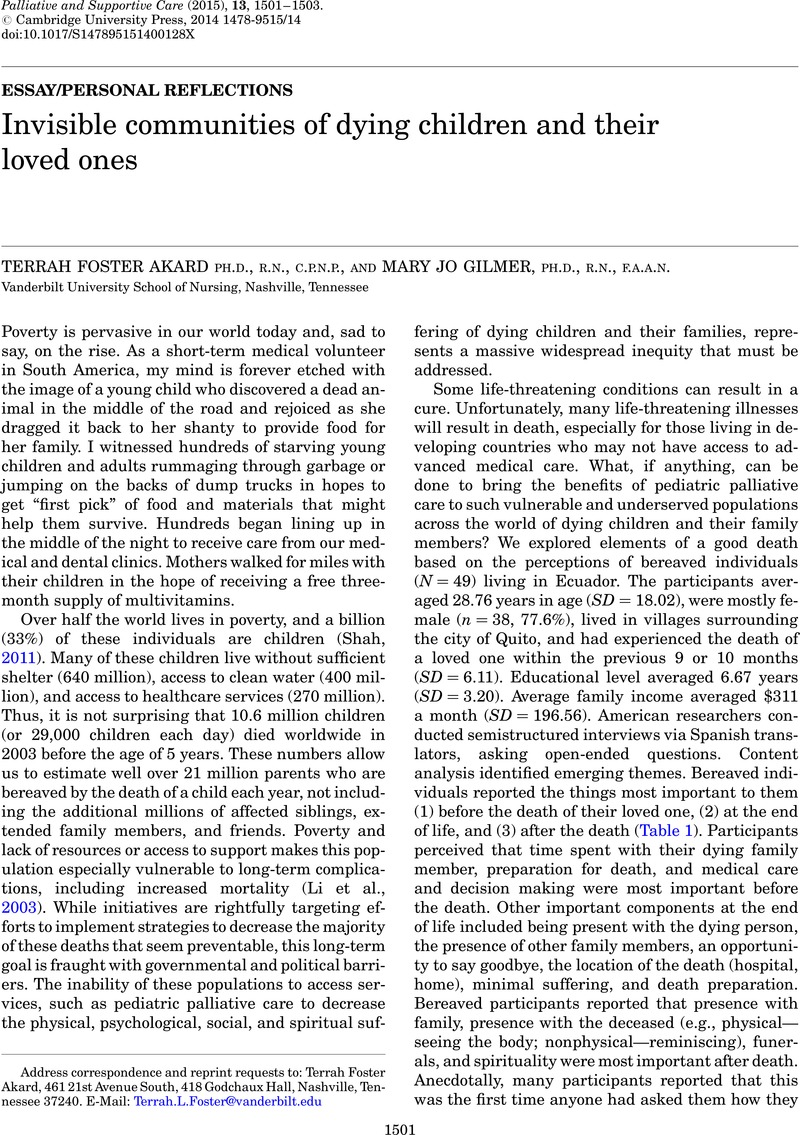No CrossRef data available.
Article contents
Invisible communities of dying children and their loved ones
Published online by Cambridge University Press: 24 October 2014
Abstract
An abstract is not available for this content so a preview has been provided. Please use the Get access link above for information on how to access this content.

- Type
- Essay/Personal Reflections
- Information
- Copyright
- Copyright © Cambridge University Press 2014
References
REFERENCES
Akard, T.F., Gilmer, M.J., Friedman, D.L., et al. (2013). From qualitative work to intervention development in pediatric oncology palliative care research. Journal of Pediatric Oncology Nursing, 30, 153–160.Google Scholar
Foster, T.L., Dietrich, M.S., Friedman, D.L., et al. (2012). National survey of children's hospitals on legacy-making activities. Journal of Palliative Medicine, 15, 573–578.Google Scholar
Li, J., Precht, D.H., Mortensen, P.B., et al. (2003). Mortality in parents after death of a child in Denmark: A nationwide follow-up study. Lancet, 361(9355), 363–367.Google Scholar
Shah, A. (2011). Today, around 21,000 children died around the world. Global Issues, 2011. Available at http://www.globalissues.org/article/715/today-21000-children-died-around-the-world).Google Scholar


